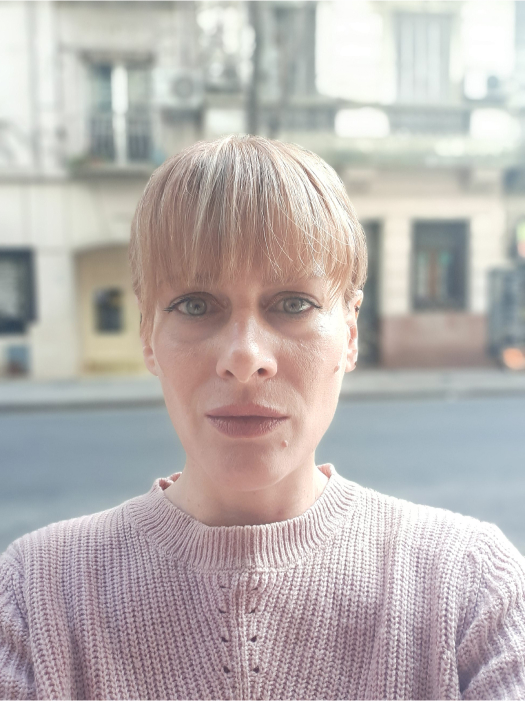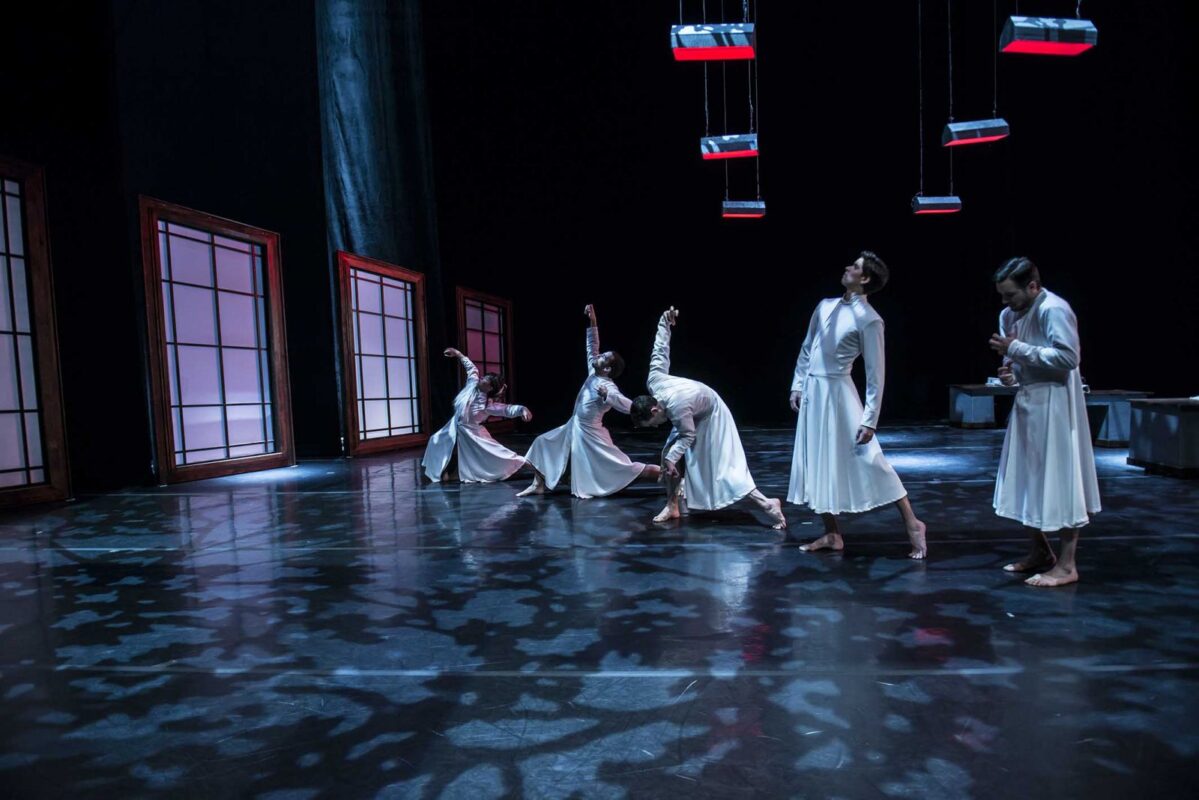
Telling a story through clothing
I started in the world of costume almost by chance. I liked fashion and art, but I knew I wanted to be something other than a fashion designer, and being a visual artist was too solitary for me. I enjoy working in teams. One day, I saw a play and thought, “This is it.” I was young, around 16 years old. Unfortunately, there wasn’t and still isn’t a formal career path for this, so I learned slowly, going from one person to another.
I studied at the Teatro Colón, where I interned and had a fabulous first experience at 18. I spent three years in various roles within the Colón. My first exposure was to opera, no less. After leaving the theater, I continued to work in opera at the Teatro Avenida.
Costume design is about helping to tell a story through clothing. Each project has specific needs; opera requires spectacle, while ballet may require a more abstract approach to complement the dancer’s body. There are different needs, but always from a collaborative standpoint and enhancing the story the director or choreographer wants to convey.
This work may seem frivolous, but it is very complex. There are many stages and many steps to follow. There are technical aspects that you learn over the years. You become less concerned about uncomfortable situations and can focus more on what truly interests you: expressing, collaborating, and being a committed part of something. This happens when you no longer worry about whether the fabric stretches, whether it will be tight on the performer, whether they can change costumes in time, or whether it will withstand multiple washes. It’s like riding a bike or cooking when these aspects become ingrained. You start paying attention to needs and not imposing ideas.
In the early years, I met choreographer Diana Theocharidis. She has a unique vision and a particular approach. I worked with her and her company for several years, and it was a unique and liberating experience. This job is also a game. While it’s a professional job with deadlines and responsibilities, it’s still a playful space. That was the first company I worked with.

The fabulous thing about working on operas and shows is teamwork, realizing that you are part of something. One should enhance others’ ideas while others collaborate and enhance one’s ideas. It’s about growth, development, change, and new interests. If one were alone, it would be much more challenging. Costume design is closely tied to human relationships, collaboration, accepting others, and understanding that there isn’t a single idea about things. It’s a job that helps me navigate life better because it’s about learning from others, trusting, collaborating, challenging ourselves, and listening. In this sense, it makes me a better person.
I’ve often fantasized about what I would do if I weren’t in this field. Sometimes, I have a crisis with my work and think, “I want to do something else.” But the truth is, that feeling lasts for two days, and then I go back to saying, “I love my job.” It’s always different, and that’s fantastic; I can never get bored. Something new is always presented, and I can’t imagine doing anything else.
A language of our own
After working with Diana, I worked with other choreographers. I met Marcelo Savignone, a director of physical theater, where the body is very delicate. What he does is very poetic; it’s prose, and we couldn’t say it’s traditional ballet. It involves the body in a poetic sense, to use the body for expression, to convey feelings, sensations, and stories.
While Marcelo already had a group called Sucesos Argentinos, where the body was also heavily involved, he gradually developed his language. I believe there was a turning point for him, or a pivotal moment, in a project that was done at the San Martín theater, which was a ballet. He could separate words from prose and direct them in his way. Working with him was an incredible experience, and I think it was also a crucial moment in his development as a director.
Each project arises from different places. Inspiration or starting points come from us, from the technicians or artists. However, you want to call us. In this sense, we each develop our language. But also, each project requires something different or asks for other things. Every three or six months, a new idea emerges, and a new project has to be developed.

In particular, the working process in ‘Ensueño‘ with Marcelo was unique. He had five or six very vague, very universal triggers. We gathered, talked, sought different inspirations, and found some things we wanted to convey. But, working in an official theater has several requirements, and there’s a lot of planning. Even commercial theater sometimes has more freedom because you can attend five or ten rehearsals and make an aesthetic or conceptual proposal. In an official theater, it’s the opposite: you must propose beforehand and see if your dreams can be realized.
A high level of adaptability is required: working within a macro concept and thinking about other situations like multifunctionality in more neutral places and the specific timelines you’ll have to develop the work. When we worked on ‘Ensueño,’ we presented the project, and it was approved. During the month and a half it took to assemble, I realized what I had initially proposed didn’t make sense. Ultimately, it became more abstract, and I think it was for the better. I was much happier with the final idea compared to the initial one. This last idea is essential and has to do with teamwork: sometimes someone else, not just the director, may suggest something, and then you have to reconsider what you had thought of to support better and express yourself.
The creative process is unique every time
Each project finds different forms; it’s not something systematized, and I need a fixed way. When there’s a book, a movie, or a text-based play, I first read the book. That’s when I imagine the costumes, much like when you read a novel and begin to recreate images in your mind. When it’s a ballet, I ask the choreographer to show me some inspiration or what they have assembled if it still needs to be staged as a starting point. But beyond that, the process is very different each time.
Sometimes, the association happens quickly, and sensations come to mind. This film is sad or a film noir, and it needs a certain tension. I start from that feeling, leading me to a color palette, which is crucial for me. From there, the shape of the clothing has a lot to do with it, whether it’s something suffocating, embracing, tender, soft, or rough. All these sensations ultimately help convey that initial emotion.
Sometimes, the costume might seem imposed or added and shouldn’t be that way. The outfit seeks the opposite: it must be organic and go unnoticed. One should believe that it couldn’t have been any other way unless the show requires something particular or eye-catching, as in the case of a musical. Whenever we tell a story, the important thing is that the costumes seem as natural as possible as if this person couldn’t have been dressed any other way. That’s the subtlety of our craft.

I have a solid connection to dance; I’ve studied various types of dance and have a good relationship with sports. But I never imagined, nor do I imagine myself in a position on stage, for example, as a dancer. I’m close to dancers and actors. There’s synergy with performance – costume design is the only field with close collaboration. There’s also closeness to those who work in lighting. Lighting is crucial in a show – light and color treatment are fundamental tools for any of our disciplines.
We need to consider not only how the costume comes to life with the actor but also how the actor comes to life with the costume. Many actors build their characters after the costume fitting. I have a close relationship with the actors I work with, and we always have collaborative discussions – perhaps even more so than with directors.
Actors are more receptive to seeing what will happen with those characters, those personas. Or a dancer who suddenly discovers a resource they didn’t have before because they couldn’t walk the same way because the skirt was too narrow or because they had a lot of fabric to play with.
Even the color of the costume can trigger a new emotion for the dancer or actor; this happens all the time. Sometimes, there’s also an exchange of energy, something that can’t be put into words, and when the process is over, it makes you say, “It was like this; it had to be this way.”.
The answers we don’t have
The pandemic will be a turning point in humanity. It will force us to discuss new things, have different questions about texts, and explore new dialogues. It’s important to realize that theater, dance, and music are vital. Expressions never stopped, they never paused, they always found a way to rebuild themselves from the pandemic’s beginning.
We have seen how we all reinvented ourselves and tried to express ourselves similarly because this is intrinsic to human beings. We need this to ask ourselves questions. The theater is about seeking empathy and searching for the answers we don’t have, generating dialogues, and creating quests. That is the fundamental thing that this situation we are going through will leave us.
Any form of dance, any performing art, is necessary in these times; any proper and desired state-of-the-art. We are talking about the importance of artistic expression in human beings. We need this to continue happening. Any kind of expression, whether small, in the neighborhood or the cultural center, in national theaters, in the square, or in your home, any form of representation and expression is valid and necessary.